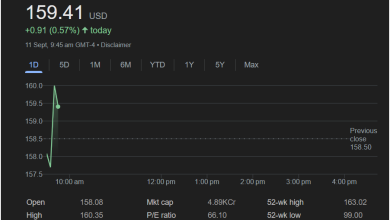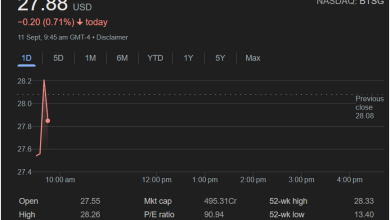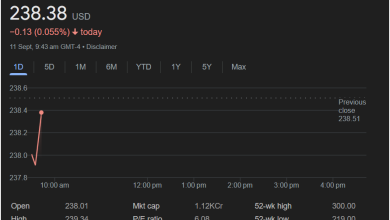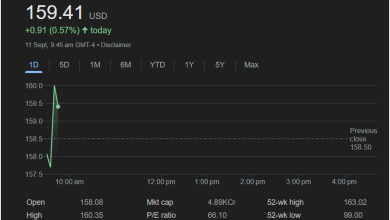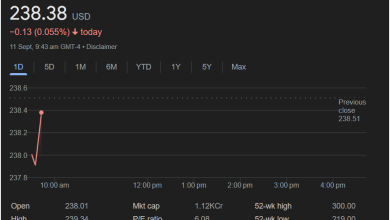Tesla’s Strategic Resilience: A Minor Dip in the Path of Innovation
Analysts Project Continued Growth Despite August 2025 Fluctuation, Highlighting Long-Term Market Confidence

SEPTEMBER 2, 2025 – While the August 29th, 2025 trading day saw Tesla Inc. (NASDAQ: TSLA) experience a modest decline of 3.50%, closing at $333.86, market analysts and industry observers remain overwhelmingly bullish on the electric vehicle and sustainable energy giant’s long-term trajectory. This minor fluctuation, far from signaling underlying issues, is being widely interpreted as a natural market adjustment within a period of aggressive expansion and groundbreaking innovation that continues to define Tesla’s market position as of early September 2025.
The daily snapshot from August 29th, which showed the stock opening at $347.23, reaching a high of $348.75, and dipping to a low of $331.70 before closing at $333.86 (down from a previous close of $345.98), reflects typical intraday volatility. Importantly, this movement occurs within a much larger context of strong year-to-date performance and robust market capitalization, which stood at an impressive 1.05 trillion USD. With a 52-week high of $488.54 and a low of $207.03, the stock’s current position, even after the August 29th dip, demonstrates significant value appreciation over the past year.
Innovation as the Driving Force
Tesla’s resilience, even in the face of minor market corrections, is largely attributed to its relentless pursuit of innovation. As of September 2025, the company continues to lead in electric vehicle technology, battery development, and autonomous driving capabilities. The recent advancements in their next-generation battery technology, offering extended range and faster charging, have been particularly well-received, promising to further cement their competitive edge. Industry insiders suggest these breakthroughs will unlock new markets and consumer segments, underpinning future revenue growth.
Moreover, the expansion of Tesla’s Gigafactory network globally, especially in emerging markets, is proceeding ahead of schedule. These new production hubs are not only increasing manufacturing capacity but also improving supply chain efficiencies and reducing logistical costs, all of which contribute positively to the company’s long-term profitability outlook. The strategic placement of these factories is crucial for meeting escalating global demand for EVs and energy storage solutions.
Beyond Vehicles: Energy and AI
While Tesla is synonymous with electric cars, its energy division is increasingly becoming a significant growth driver. Solar deployments and battery storage solutions for homes and utilities are seeing accelerating adoption. Governments worldwide are prioritizing renewable energy, and Tesla Energy’s integrated offerings provide scalable and efficient solutions that are increasingly attractive to both residential and commercial clients. The synergy between Tesla’s vehicle and energy divisions creates a powerful ecosystem, further differentiating the company from traditional automakers.
Furthermore, Tesla’s advancements in artificial intelligence, particularly in the realm of full self-driving (FSD) technology, continue to push boundaries. Despite regulatory hurdles and the inherent complexities of AI development, continuous over-the-air updates and data-driven improvements are steadily enhancing FSD capabilities. The potential revenue streams from widespread FSD adoption, whether through subscriptions or licensing, represent a substantial future upside.
Market Confidence and Analyst Projections
Despite the August 29th dip, the broader market sentiment towards Tesla remains robust. The company’s high P/E ratio of 193.51, while indicating high growth expectations, also reflects strong investor confidence in its future earnings potential and disruptive market position. Analysts consistently highlight Tesla’s ability to innovate, adapt, and scale as key factors supporting their optimistic projections. Many foresee Tesla not just as an automotive company, but as a technology and energy conglomerate poised for sustained growth over the next decade.
The absence of a dividend yield, and quarterly dividend amount, as shown in the August 29th data, is typical for high-growth companies like Tesla, which reinvest their earnings back into research and development, as well as expansion initiatives, to fuel further growth rather than distributing profits to shareholders. This strategy is generally favored by investors seeking capital appreciation.
Looking Ahead: The Road to Continued Leadership
As of September 2, 2025, Tesla is well-positioned to capitalize on the accelerating global shift towards sustainable transportation and energy. While daily stock fluctuations are a natural part of market dynamics, the company’s foundational strengths – innovation, market leadership, and a clear vision for the future – provide a compelling narrative for continued success. The August 29th dip serves as a minor footnote in a much larger story of transformative growth, reinforcing the idea that for long-term investors, Tesla’s journey is still very much in its early, exciting phases.
